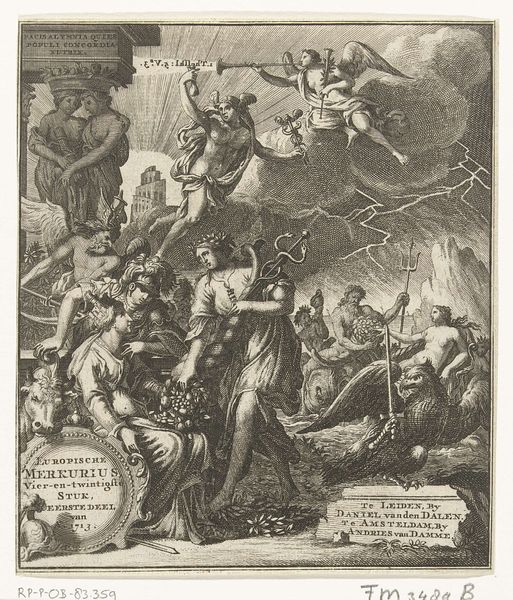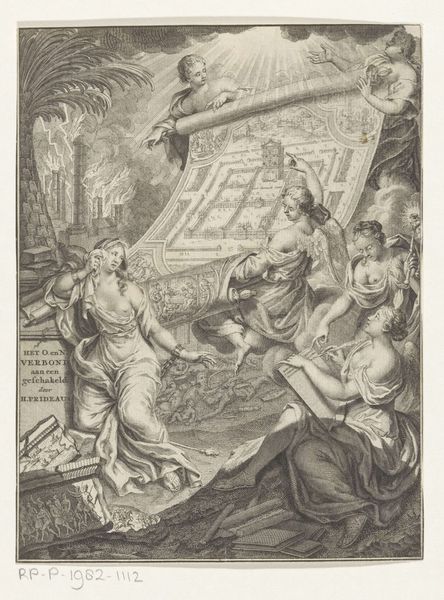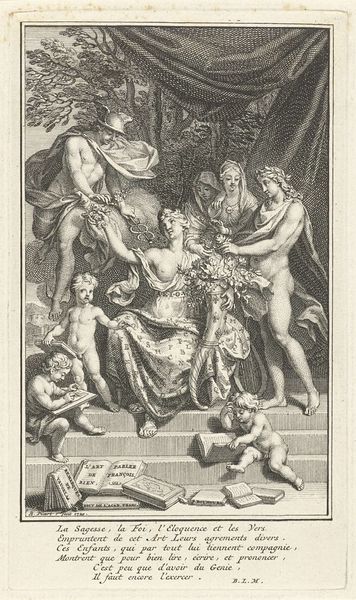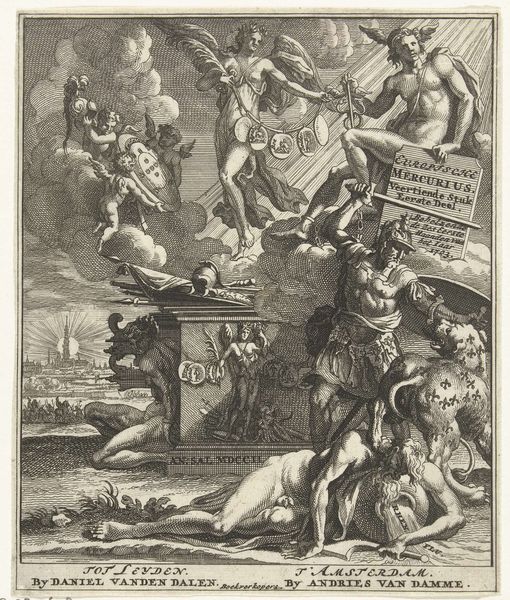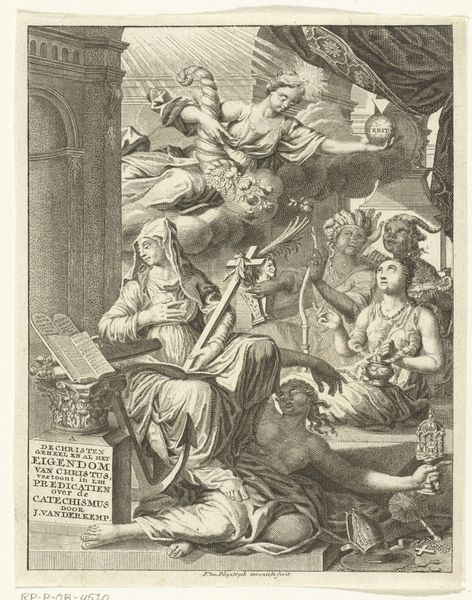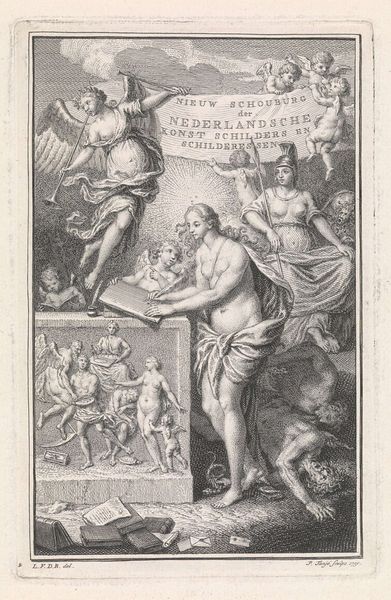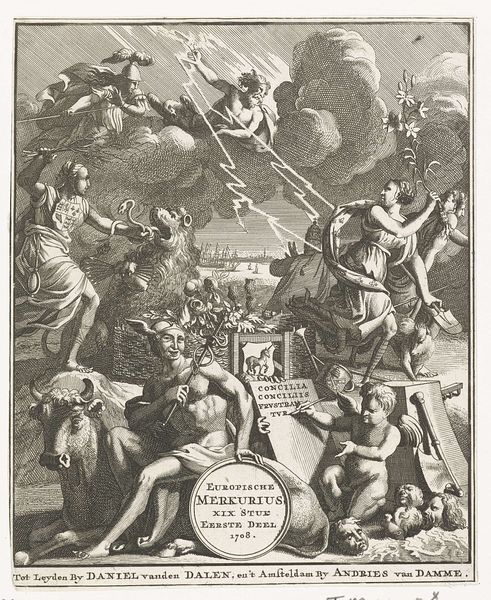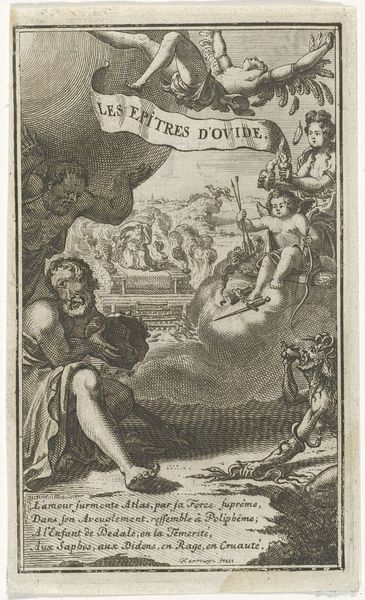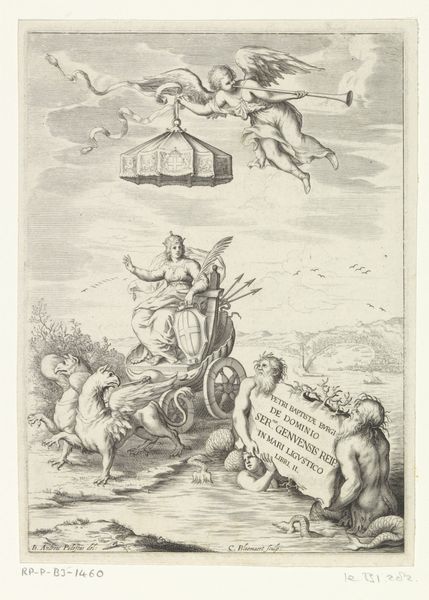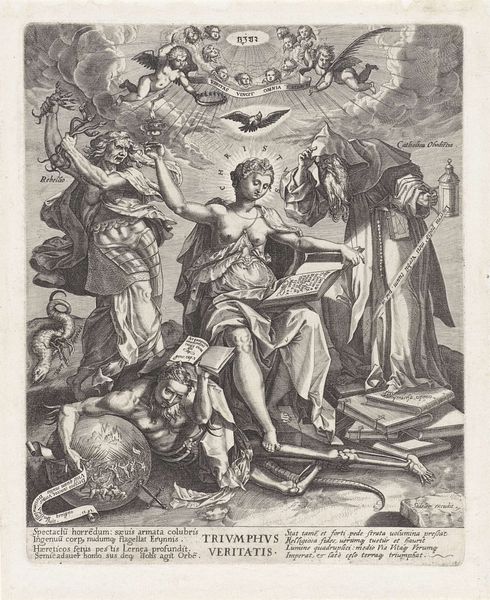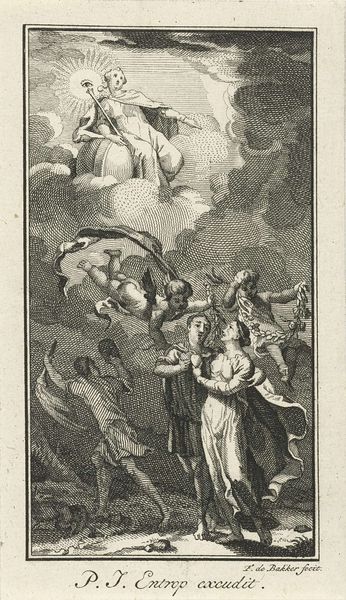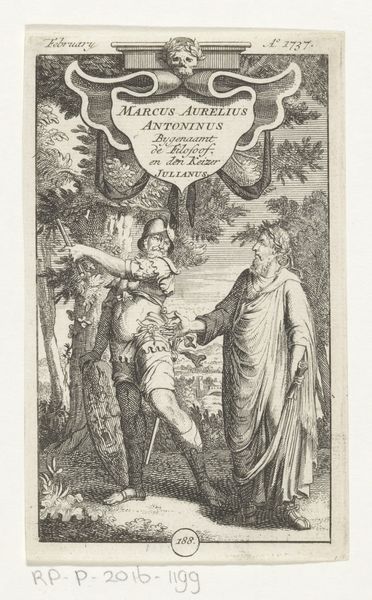
Titelprent voor 'Innerlycke ziel-tochten op't H. avontmaal' van Hieronymus Sweerts 1683
0:00
0:00
romeyndehooghe
Rijksmuseum
print, engraving
#
allegory
#
narrative-art
#
baroque
#
dutch-golden-age
# print
#
pen illustration
#
book
#
old engraving style
#
figuration
#
engraving
Dimensions: height 140 mm, width 89 mm
Copyright: Rijks Museum: Open Domain
Curator: This engraving, now held at the Rijksmuseum, serves as the title print for Hieronymus Sweerts' "Innerlycke ziel-tochten op't H. avontmaal," dating back to 1683. Editor: My first impression is a sense of ornate piety, but also a curious density. Figures upon figures, a layering of realities. What's most striking is the figure being seemingly offered something from above. Curator: Yes, that's a classic Baroque strategy: a complex symbolic program aimed at elevating the soul through visual rhetoric. The central female figure appears to represent Divine Love, drawing sustenance and spiritual guidance directly from the heavens. Her gaze upward suggests an allegorical reaching beyond earthly concerns. Editor: And those other figures clustered around the table below, diligently studying their books... what's their place in this drama? Are they recipients of this divine affection as well? Or, is it maybe something about the public performance of piety? Curator: They represent a community engaged in religious study and contemplation, very possibly mirroring the readership Sweerts hoped to attract. Note the putto wrestling with a serpent, a common symbol for overcoming earthly temptations, and the table can represent spiritual understanding, where those devoted women share that faith. Editor: So the image is a deliberate articulation of social norms surrounding piety in the Dutch Golden Age? It seems the artist, Romeyn de Hooghe, employed a fascinating interplay between the idealized allegory and the depiction of real-world practices within that cultural setting. Curator: Precisely! Consider also the use of the banner bearing the title; it almost acts as a visual bridge between the earthly and heavenly realms, inviting the viewer to participate in the same journey of inner reflection. The harp carried by the angel also indicates religious devotion and harmony. Editor: It's quite cleverly composed. I'm especially drawn to the way de Hooghe manages to compress all these layers of meaning within a relatively small format, using a dynamic composition to elevate something to a more powerful allegory. The detail given with just simple engraving techniques are marvelous, and allows you to truly fall into it as well. Curator: A perfect example of how art serves as a vessel of cultural memory, encoding values and beliefs within its symbolic framework for generations. It’s been great to re-discover how art connects people through the ages! Editor: Indeed, revealing how the echoes of the past still reverberate in the present moment. It’s something quite magical!
Comments
No comments
Be the first to comment and join the conversation on the ultimate creative platform.


